Snail mucin has gained popularity as a skincare ingredient. People claim it can improve skin texture and hydration. To test these claims, some have tried using snail mucin products for two weeks straight.
Using snail mucin on your face for two weeks may lead to increased skin hydration and a smoother complexion. One small study found that women who used snail secretion products saw improvements in their skin. The mucin contains antioxidants that might help reduce signs of aging like wrinkles and uneven skin tone.
Snail mucin products come in different forms, such as creams and serums. To use them, you typically apply a small amount to clean skin and let it absorb before adding other products. While results can vary, many users report positive experiences after consistent use for a couple of weeks.
Key Takeaways
- Snail mucin may boost skin hydration and smoothness when used daily
- Products containing snail mucin come in various forms like creams and serums
- Consistent use for two weeks could show noticeable improvements in skin texture
What is Snail Mucin?
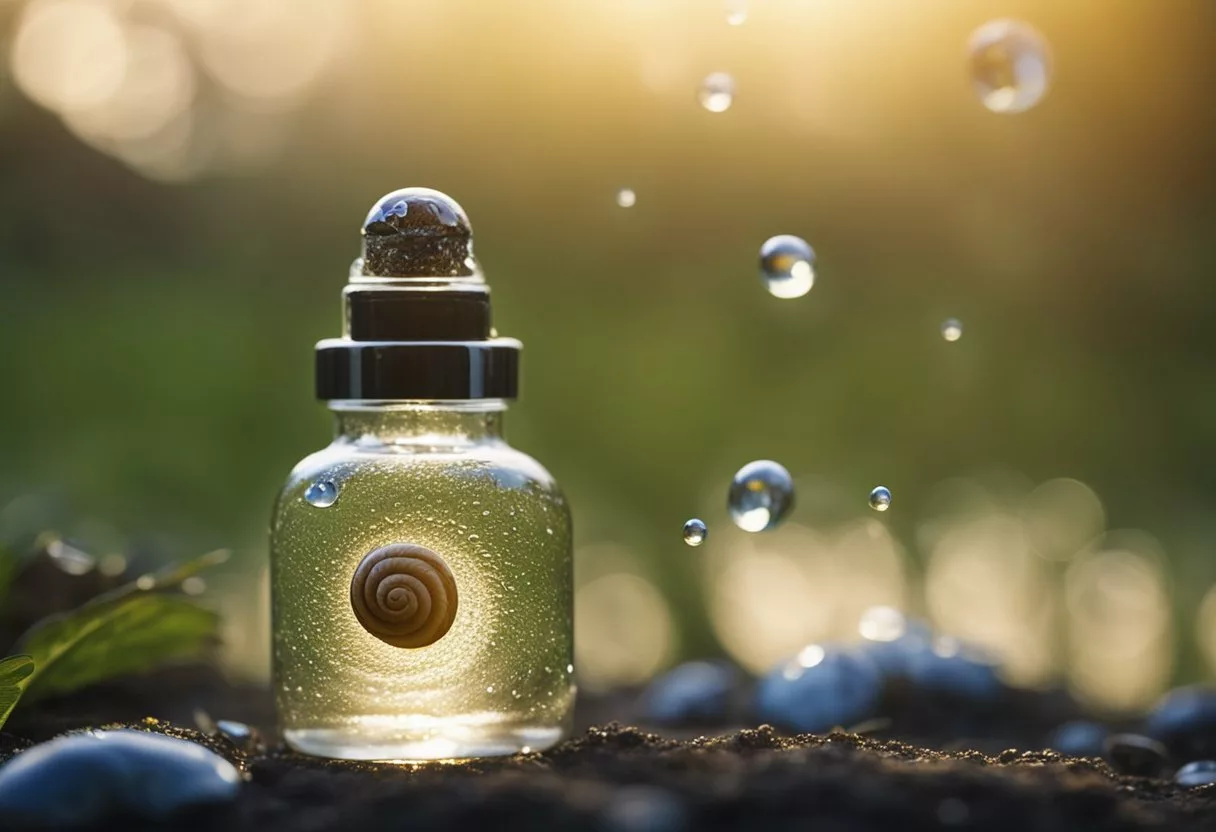
Snail mucin is a natural substance with unique properties for skin health. It contains several beneficial components that can improve skin appearance and function.
Composition and Properties
Snail mucin is made up of glycoproteins, hyaluronic acid, and glycolic acid. These ingredients help hydrate and protect the skin. The mucin also contains allantoin, which aids in skin healing and cell renewal.
Snails produce this slime as a protective measure. It helps them move and shields their bodies from damage. In skincare, these same properties translate to benefits for human skin.
The texture of snail mucin is typically gel-like and slightly sticky. It absorbs quickly into the skin without leaving a greasy residue.
Benefits for Skin
Snail mucin offers several potential benefits for skin health:
- Hydration: It helps lock in moisture, keeping skin plump and hydrated.
- Anti-aging: The mucin may reduce fine lines and wrinkles.
- Healing: It can speed up skin repair and reduce scarring.
- Brightening: Some users report improved skin tone and clarity.
Studies suggest that snail mucin may help with skin regeneration. It also contains antioxidants that fight free radical damage, potentially slowing signs of aging.
Snail Mucin in Skincare History
The use of snail mucin in skincare dates back centuries. Ancient Greeks reportedly used snails for medicinal purposes. In more recent times, Chilean farmers noticed their hands became softer after handling snails.
This discovery led to further research and development of snail mucin-based skincare products. In the early 2000s, Korean beauty brands popularized snail mucin in their formulations.
Today, snail mucin is found in various skincare items. These include serums, moisturizers, and face masks. Its popularity continues to grow as more people discover its potential benefits.
Benefits of Snail Mucin
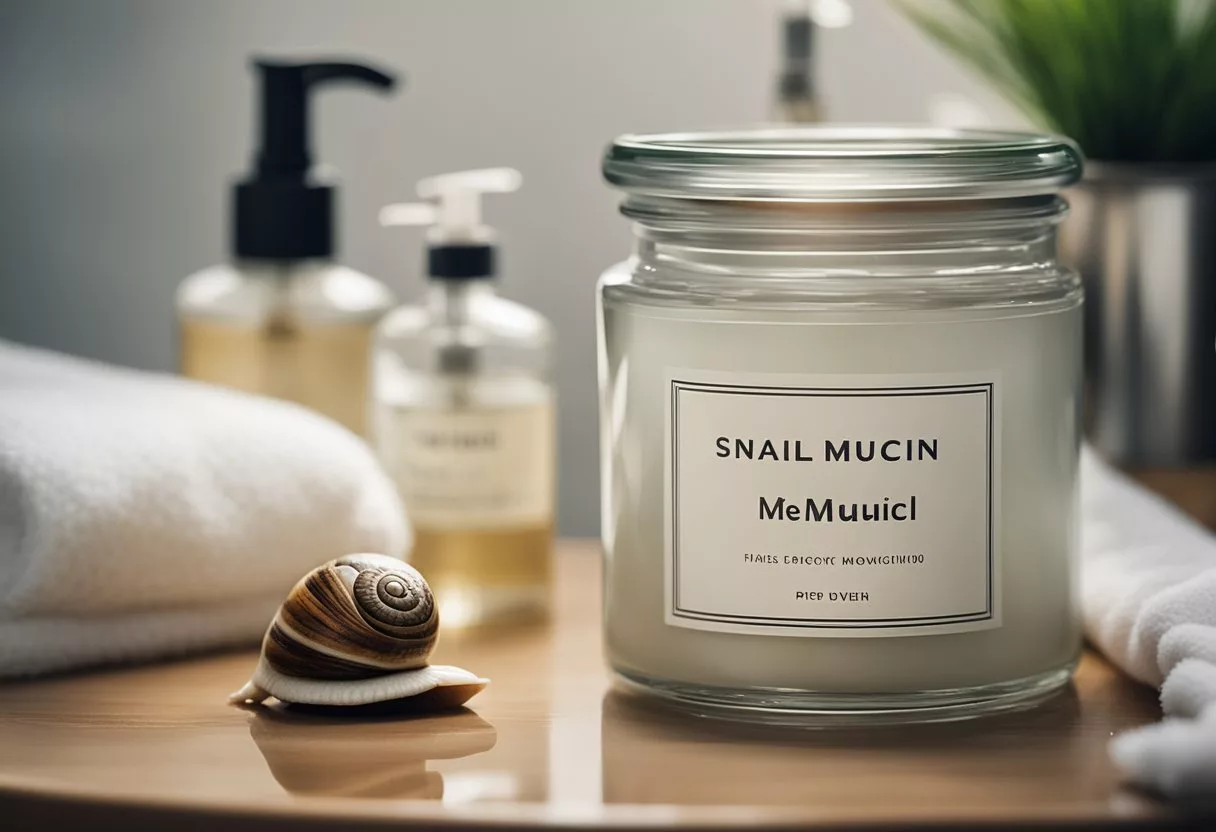
Snail mucin offers several advantages for skin care. It can improve skin hydration, reduce signs of aging, and promote healing.
Hydration and Moisture
Snail mucin acts as a powerful moisturizer for the skin. It contains hyaluronic acid, a substance that helps retain moisture. This ingredient can hold up to 1000 times its weight in water.
Snail mucin forms a protective barrier on the skin. This barrier locks in moisture and prevents water loss. As a result, skin feels smoother and more supple.
Regular use of snail mucin can improve skin texture. It helps combat dryness and flakiness, leaving skin feeling soft and hydrated.
Wrinkles and Fine Lines Reduction
Snail mucin may help reduce signs of aging like wrinkles and fine lines. It contains compounds that boost collagen production in the skin. Collagen is a protein that gives skin its structure and elasticity.
By increasing collagen, snail mucin can improve skin firmness. This may lead to a reduction in the appearance of wrinkles and fine lines over time.
The ingredient also has antioxidant properties. These help protect skin from damage caused by free radicals, which can accelerate aging.
Healing and Repairing Properties
Snail mucin contains allantoin, a compound with soothing properties. This substance can help calm irritated skin and reduce redness.
The mucin also supports wound healing. It may speed up skin repair after damage from acne, sun exposure, or minor injuries.
Some studies suggest snail mucin might help fade acne scars and hyperpigmentation. Its skin-regenerating properties can promote a more even skin tone.
Usage and Application
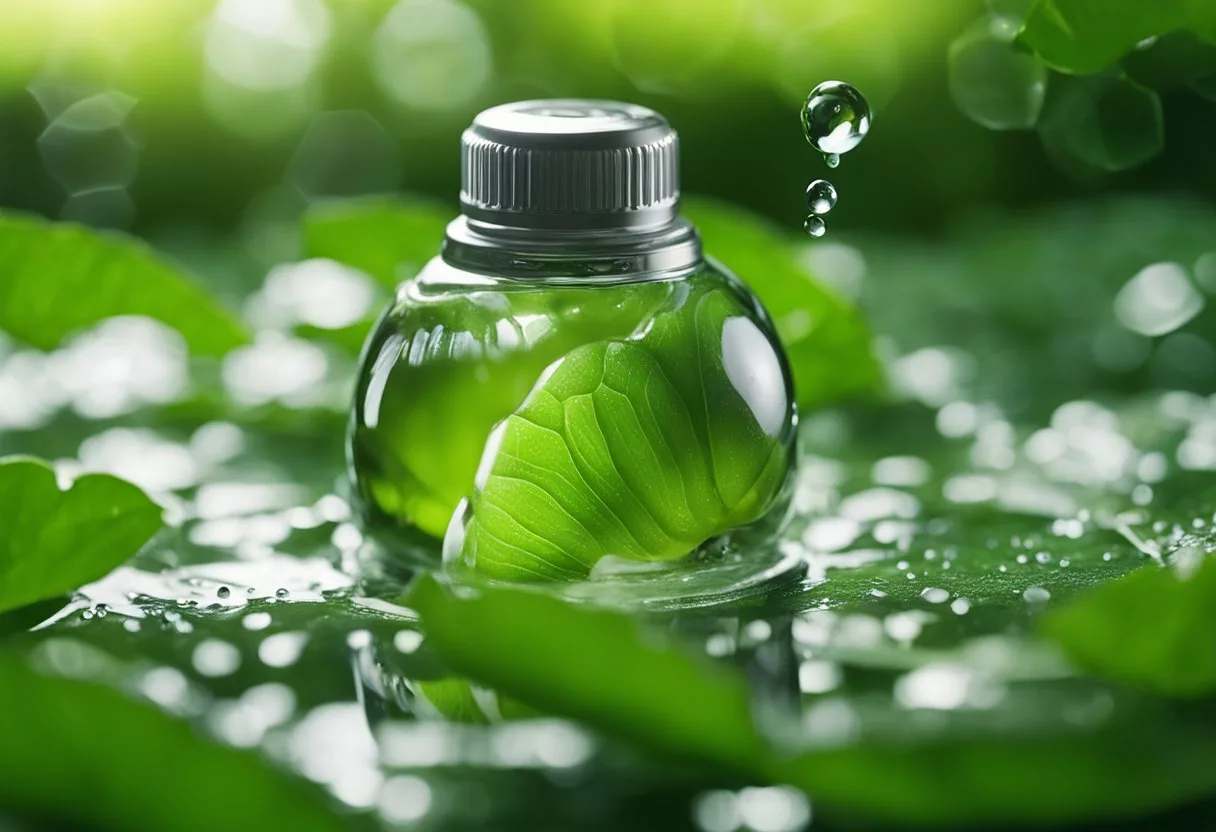
Snail mucin can be easily incorporated into skincare routines. Various products contain this ingredient, and proper application techniques help maximize its benefits.
Incorporating into Daily Routine
Snail mucin fits well into both morning and evening skincare routines. After cleansing, apply a snail mucin serum or essence. This step comes before moisturizer.
For morning use, follow with sunscreen. At night, layer other treatments if desired. Start with a small amount and increase gradually.
Most people can use snail mucin daily. Those with sensitive skin may want to start with every other day.
Snail Mucin Products
Many brands offer snail mucin skincare items. CosRx is a popular choice for snail mucin products. Options include:
- Serums
- Essences
- Moisturizers
- Sheet masks
- Eye creams
Some products combine snail mucin with other ingredients like hyaluronic acid or niacinamide. Choose based on skin type and concerns.
Application Techniques
Apply snail mucin products to clean, slightly damp skin. This helps with absorption. Use gentle, patting motions rather than rubbing.
For serums or essences:
- Dispense a small amount
- Warm between palms
- Press into skin
With creams, use upward motions. Don’t forget neck and décolletage areas. Allow each layer to absorb before applying the next product.
For eye creams, use ring finger and tap lightly around the eye area.
Skin Types and Reactions
Snail mucin can affect different skin types in various ways. Some people may experience benefits, while others might have adverse reactions. It’s important to understand how this ingredient interacts with your skin.
Suitability for Different Skin Types
Snail mucin works well for many skin types. People with dry skin often find it moisturizing and hydrating. The mucin’s natural compounds help lock in moisture, making skin feel softer and more supple.
For those with oily or acne-prone skin, snail mucin can be beneficial too. It’s lightweight and non-greasy, so it won’t clog pores. The mucin may even help control excess oil production.
Sensitive skin types should be cautious. While snail mucin is generally gentle, some may find it irritating. It’s best to start with a small amount and watch for any reactions.
Potential Irritation and Allergies
Though rare, some people may experience irritation or allergic reactions to snail mucin. Signs of irritation can include:
- Redness
- Itching
- Burning sensation
- Swelling
These symptoms usually appear shortly after applying the product. If you notice any of these signs, stop using the snail mucin immediately and rinse your face with cool water.
Allergic reactions are uncommon but possible. People with dust mite allergies might be more likely to react to snail mucin. If you have known allergies, it’s wise to consult a dermatologist before trying snail mucin products.
Conducting a Patch Test
Before applying snail mucin to your face, it’s crucial to do a patch test. This simple step can help prevent potential side effects and allergic reactions.
To perform a patch test:
- Apply a small amount of the product to your inner forearm.
- Cover the area with a bandage.
- Wait 24-48 hours.
- Check for any signs of irritation or allergic reaction.
If you don’t see any negative reactions after 48 hours, it’s likely safe to use the product on your face. Remember, even if the patch test is successful, start with a small amount on your face and gradually increase usage over time.
Scientific Evidence and Dermatology Insights
Snail mucin has gained attention in skincare for its potential benefits. Research and expert opinions provide insights into its effectiveness and safety for facial use.
Clinical Studies on Snail Mucin
Snail mucin contains antioxidants that may help reduce signs of aging. A small study in the Journal of Clinical and Aesthetic Dermatology found positive results in women aged 45-65 who used products with snail secretion.
Snail mucin has shown promise for wound healing and skin rejuvenation. Its anti-inflammatory properties may help soothe irritated skin.
Research suggests snail mucin can boost collagen production. This may improve skin elasticity and reduce the appearance of fine lines.
Expert Opinions and Recommendations
Dermatologists generally consider snail mucin safe for most skin types. They often recommend it for its hydrating properties due to ingredients like hyaluronic acid.
Experts advise patch testing before applying snail mucin to the face. This helps check for any allergic reactions.
Some dermatologists suggest using snail mucin products as part of a daily skincare routine. They may recommend it for its gentle exfoliating effects, which can lead to smoother skin.
It’s important to note that snail mucin is not a treatment for serious skin conditions like melanoma or skin cancer. For these concerns, consulting a dermatologist is essential.
Safety and Ethical Considerations
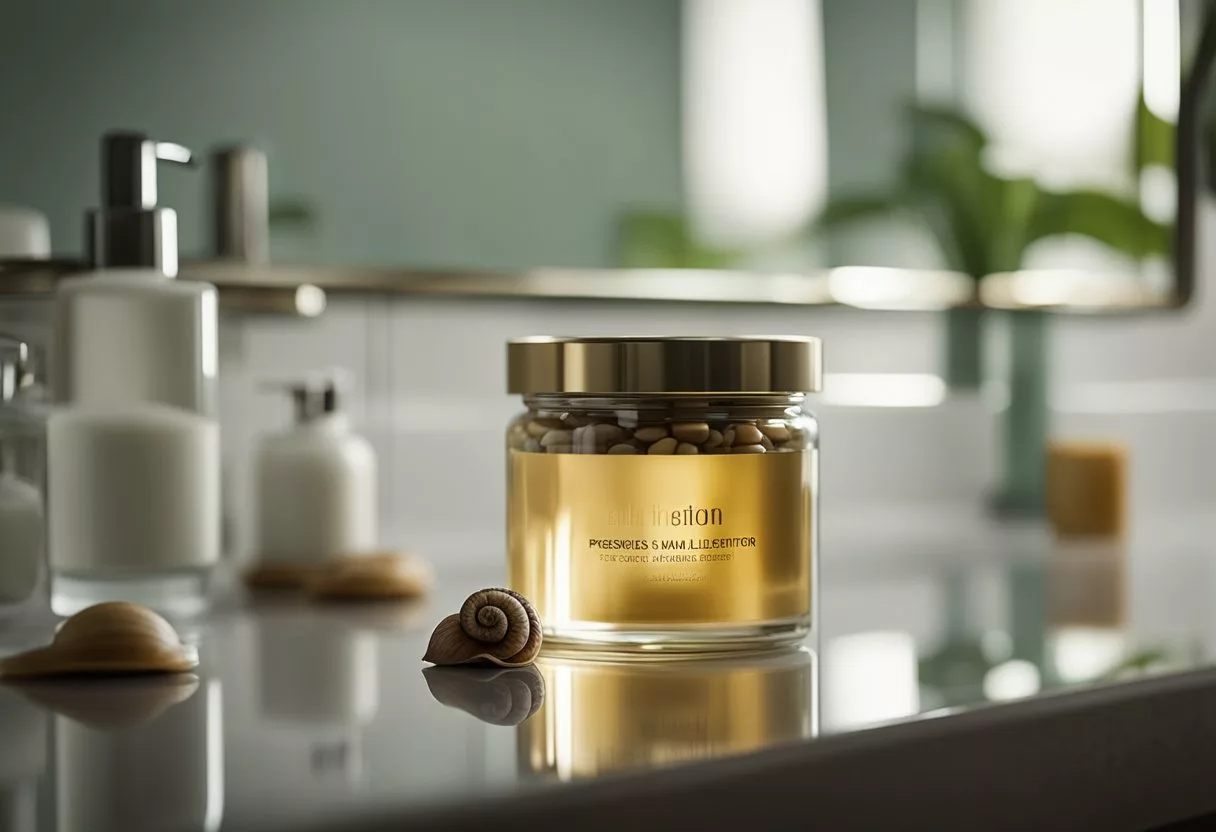
Using snail mucin on your face raises some safety and ethical questions. It’s important to weigh the potential benefits against possible risks and consider alternatives.
Cruelty-Free and Vegan Alternatives
Snail mucin is not vegan, as it comes from animals. Some people worry about how snails are treated to get their slime. Snail mucin farms exist, but their practices vary.
For those concerned about animal welfare, plant-based options are available. Ingredients like aloe vera, hyaluronic acid, and plant oils can offer similar benefits to snail secretion filtrate.
Cruelty-free skincare brands often use these alternatives. They aim to provide effective products without animal-derived ingredients.
Managing Risks and Side Effects
While snail mucin is generally safe, some people may have reactions. Possible side effects include:
- Skin irritation
- Redness
- Itching
- Allergic reactions
It’s wise to do a patch test before using snail mucin products on your face. Apply a small amount to your inner arm and wait 24 hours.
Snail mucin has antimicrobial properties, which can be beneficial. But overuse might disrupt your skin’s natural balance.
People with shellfish allergies should be extra careful. Snails are mollusks, related to shellfish. Consult a doctor if you have concerns about using snail-based skincare.
Cultural and Consumer Perceptions

Snail mucin has gained popularity in skincare routines worldwide. Its rise stems from K-beauty trends and social media influence. Many users share positive experiences with this unique ingredient.
K-Beauty and Global Trends
K-beauty introduced snail mucin to the global skincare market. Korean brands like COSRX and TonyMoly popularized products containing this ingredient. TikTok helped spread awareness of snail mucin’s benefits, with users sharing their results.
The trend expanded beyond Korea, with Western brands creating their own snail-based products. Peach Slices, for example, offers snail rescue toner and moisturizer. This shift shows how K-beauty innovations can influence global skincare trends.
User Experiences and Reviews
Many users report positive results from using snail mucin on their skin. Common benefits include:
- Improved skin hydration
- Reduced appearance of fine lines
- Faster healing of acne scars
One small study found that women aged 45-65 saw improvements in skin texture and elasticity. However, individual results can vary. Some users may experience mild irritation or breakouts.
Online reviews often highlight the product’s unique texture. Users describe it as slightly sticky but absorbent. Many appreciate its lightweight feel compared to heavier creams.
Conclusion
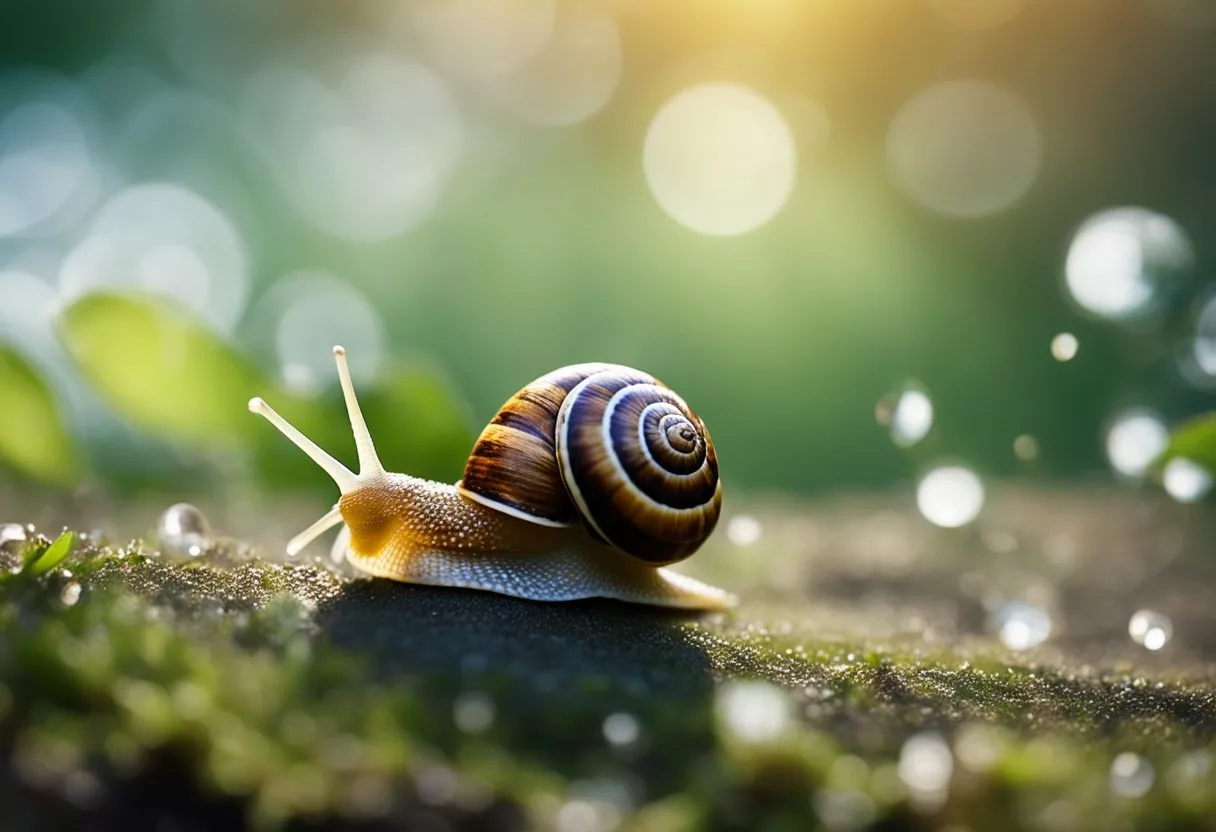
Using snail mucin on your face for two weeks can lead to noticeable improvements in skin health. The natural secretion offers multiple benefits for the skin.
Snail mucin helps boost skin hydration and moisture retention. This leaves the skin feeling softer and more supple.
The substance also has anti-aging properties. It may help reduce the appearance of fine lines and wrinkles over time.
Snail mucin strengthens the skin’s protective barrier. This can make skin more resilient against environmental stressors.
The consistency of snail mucin products is usually light and easily absorbed. This makes it suitable for various skin types.
Regular use of snail mucin can have a rejuvenating effect on the skin. Users often report a more radiant and youthful complexion.
While individual results may vary, many people see positive changes within two weeks of consistent use. For best results, it’s important to use the product as directed.
Frequently Asked Questions

Snail mucin has gained popularity in skincare routines. People have questions about its benefits, potential side effects, and proper usage. Let’s address some common concerns.
What are the potential skin benefits of using snail mucin regularly?
Snail mucin can moisturize and protect the skin. It contains antioxidants that may help reduce signs of aging like wrinkles and uneven skin tone.
Snail mucin also supports skin repair and regeneration. This can aid in healing wounds and scars.
Can snail mucin cause any adverse reactions when applied daily?
Most people tolerate snail mucin well. However, some may experience mild irritation or allergic reactions.
It’s wise to do a patch test before using snail mucin products regularly. This helps check for any negative skin responses.
How should snail mucin be incorporated into a skincare routine?
Snail mucin can be used in various forms, such as creams or serums. It’s often applied after cleansing and toning but before heavier moisturizers.
For best results, use snail mucin products consistently as part of a daily skincare routine.
What improvements might one observe in skin after continuous use of snail mucin for two weeks?
After two weeks of regular use, some people notice more hydrated and supple skin. The skin may appear smoother and more radiant.
Improved skin texture and reduced appearance of fine lines are also possible outcomes.
Is there a risk of overusing snail mucin, and can it harm the skin?
When used as directed, snail mucin is generally safe. Overuse is unlikely to cause harm, but it may not provide additional benefits.
Following product instructions and listening to your skin’s needs is key. If irritation occurs, reduce usage or stop using the product.
How does the use of snail mucin affect acne-prone skin?
Snail mucin may benefit acne-prone skin due to its moisturizing and healing properties. It can help repair the skin barrier and reduce inflammation.
However, those with acne should introduce snail mucin gradually. This allows them to monitor how their skin responds to the ingredient.